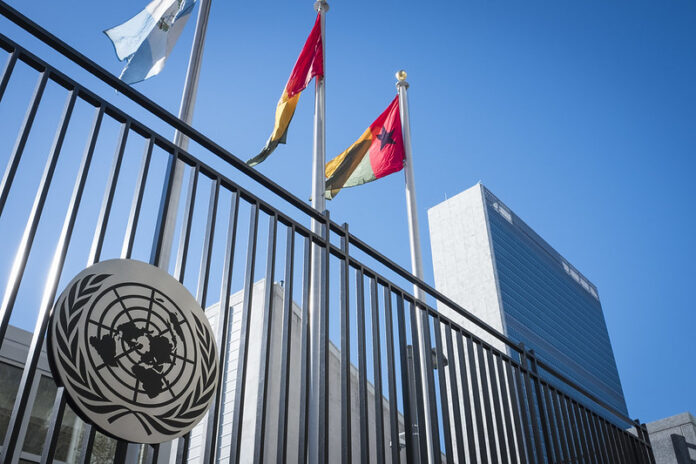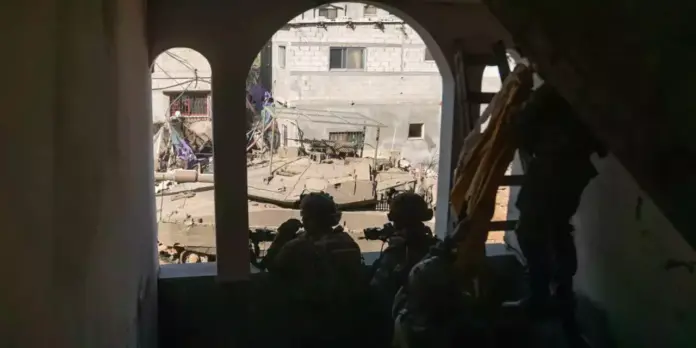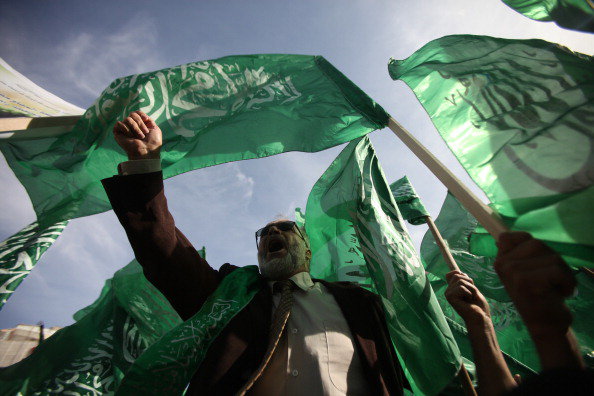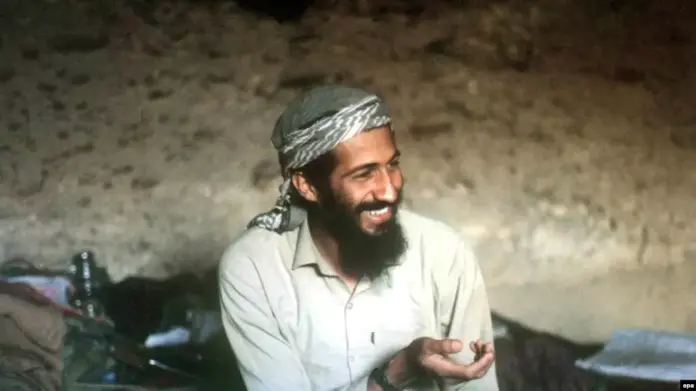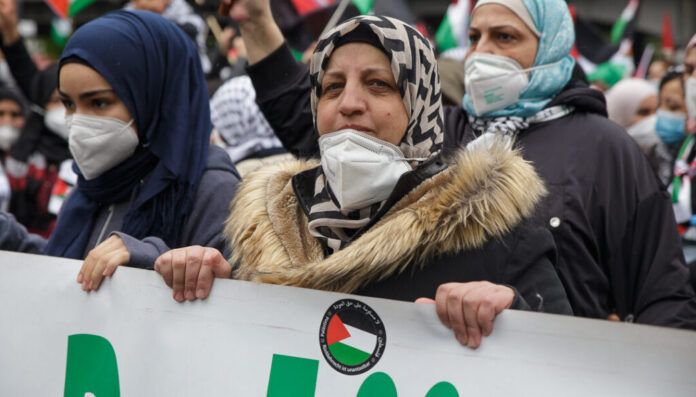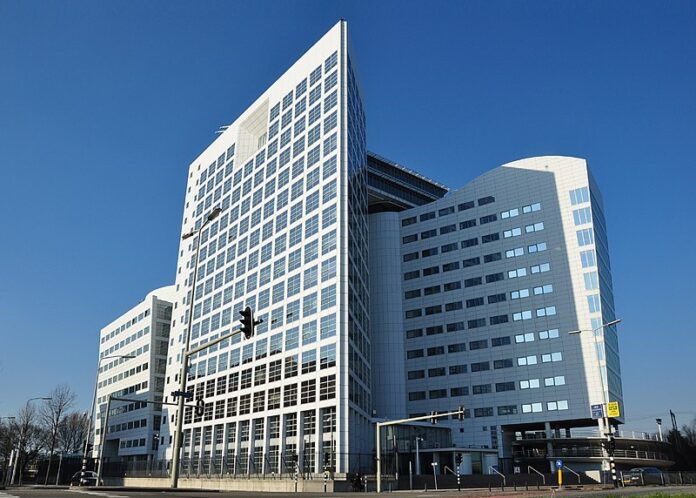The Hamas invasion of Israel on October 7, 2023 was quickly characterized by Hamas as fulfillment of a prophecy about the destruction of Israel. Hamas cast the invasion as a Palestinian version of the Battle of Badr, a battle in which a small force of Muslim believers under the command of the Prophet Muhammad succeeded in defeating a large force of Quraysh and Makkah who had opposed his prophecy. The battles of October 7 were labeled a divine victory by believers over the enemies of Allah, and many verses in this spirit were broadcast. However, more recent articles published on the Hamas website suggest that its view has undergone a transformation. Hamas has apparently shifted from extolling its “divine victory” on October 7 to admitting that it has been defeated in battle again and again. The great suffering Hamas has inflicted on the Gaza Strip has put it in the position where it must now explain to the Palestinian public why it started the war in the first place, why it did not expect a massive military response from Israel to its atrocities and attempt at genocide, and why the suffering of the Palestinians of the Gaza Strip is not in vain.
To faithful Muslims, the Battle of Badr marks the victory of a small group of believers of the Prophet Muhammad over a far superior force. The battle was held in Ramadan in 624 AD between Muhammad’s group of warriors, numbering about 300 men, and an expeditionary force of Meccan men numbering about a thousand. The battle was held near the Badr Springs; hence the name.
In a preliminary battle, Hamza, Ali, and Ubaydah Ibn Harth fought three of Quraysh’s warriors. They lost, and Ubaydah suffered mortal wounds and died a martyr. At the Battle of Badr, the Muslim force was organized, determined, and acting under unified leadership. The Meccan force was larger, but fought in a decentralized manner and without a central command. Surat al-Anfal (The Spoils) in the Qur’an describes the battle. After the victory, Muhammad revealed that angels had participated alongside the Muslim army. In a famous hadith by al-Bukhari, it is claimed that the angel Gabriel himself fought on his horse against the people of Quraysh and killed many of them.
On October 7 and throughout the waiting period until the beginning of the ground operation in which the IDF forces entered Gaza, many comparisons were made between the success of Hamas on October 7 and the famous Battle of Badr. A small military force of about 3,500 men was able to overcome deployed IDF formations along the border and breach a formidable barrier consisting of an elaborate fence, multiple firearms and tanks. The photos of the bulldozer destroying the fence and of destroyed IDF tanks became images of the victory Hamas had purportedly achieved by divine inspiration.
The website of the Al-Palestinian Center for Information gives us a glimpse into changes that seem to have taken place in the view of Hamas operatives. Where they once gushed words of praise for the rare victory over Israel, they are now admitting their military failure in the confrontation with Israel.
Consider, for example, the following article published by Dr. Muhsen Saleh, a senior researcher at the Zitouna Center in Lebanon. The article, entitled Tofan Al-Aqsa – Coping with the day after the operation, was an early response to the Hamas invasion:
The Al-Aqsa Flood operation carried out by the Al-Qassam Brigades on October 7, 2023 was a qualitative historical blow to the Zionist entity. It had not had such a [defeat] since [Israel’s] establishment 75 years ago. The operation combined the elements of military surprise, an incredible security and strategic move. [The resistance] invaded a significant area of Palestine that was occupied in 1948, causing the largest number of dead, wounded and prisoners (that is, kidnapped) compared to all the battles the Palestinians have fought since the [1948] war, in which the entity [Israel] was established. This is the highest even in relation to most of the Arab-Israeli wars.
The Israeli occupation [at the time] looked confused and shocked and felt humiliated when it saw with its own eyes the shattering of [its] security theory and the collapse of the walls of physical and psychological deterrence. [The occupation] also saw with its own eyes how the men of al-Qassam broke into 20 settlement sites (towns and kibbutzim) and 11 military sites in a matter of hours. The occupation realized that it had failed to subdue the Palestinian people and crush their resistance.
To Saleh and other writers on the site, the operation began and ended on October 7 with a decisive Palestinian victory for the Hamas organization. It was a divine victory, as described by Dr. Khaled Qaddoumi (Hamas’s representative in Iran) in an article entitled: “Hamas is making history” that he published the day after the war broke out:
… we must prepare ourselves for this campaign (against Israel) with all the means at our disposal, including sanctification and strengthening the truth and justice for the Palestinian people. We must support comprehensively and in all areas the battle for liberation until the true promise is fulfilled.
[We told the children of Israel in the scripture to say, Twice you shall conquer the land and be very proud]. When the first time took place, we sent among you our servants the heroes of the war and they raided into the colonies and thus the promise was fulfilled (Qur’an, 17 4-5).
These verses, from the Surat al-Isra’ (the Night Journey), appeared in postings by many Hamas supporters at the time. For them, the invasion symbolized the realization of a divine promise to destroy Israel, a promise written in the Qur’an.
Hamas activist Khamis al-Qatiti summarized the battles on October 7, 2023 in an article entitled “The Tears of the Spider’s Web“:
This great battle is the flood of al-Aqsa. It reminds the people of the entire [Islamic] nation of the battles of the Muslims, the great [battles] of Badr and Al-Khandaq [the battle of the trench in 627 AD in which Medina was attacked by the people of Mecca, other Arab tribes, and Jews who had joined them. The defenders, led by the Prophet Muhammad, dug trenches and from there repelled the attack] and Khaybar [a battle fought by Muhammad’s people against the Jews of al-Khaybar and Jewish refugees from Medina; the battle took place in 629 AD and ended in a Muslim victory] and [Horns of] Hattin [the battle in 1187 AD in which Saladin defeated the Crusaders and thereby brought an end to the Crusader Kingdom] and Ain Jalut [Battle of Ein Harod, which was fought in 1260 AD between the Mamluks and the Mongols, who were considered infidels at the time. The battle ended in a Mamluk victory]. It also reminds us of the last victory achieved by a united Arab will fifty years ago in the great battle for the crossing (the Battle of the Suez Canal in the Yom Kippur War in 1973).
But what happens when many begin to ask if Hamas was wrong when it went to war in Gaza? Has the “divine victory”, as Hamas spokesmen called the battles of October 7, not become a second Nakba?
Hamas predicted that Israel would not enter the Gaza Strip for ground maneuvers and that the war that would break out as a result of its invasion of Israel would end swiftly. Surely, Hamas believed, the inevitable heavy international pressure on Israel would force it to stop fighting. Hamas also expected Israel to retreat to the October 6 lines while negotiating a wholesale release of Palestinian prisoners in exchange for the hundreds of Israeli hostages due to Israel’s high sensitivity to human life. All these expectations were disappointed. The death toll in the Gaza Strip is rising, most Hamas battalions have been disbanded and stripped of their military and organizational capabilities, and the Gaza Strip, which until recently was considered a land liberated by jihad, is being recaptured.
Against the background of growing criticism of Hamas among parts of Palestinian society, Israel’s losses are being trumpeted on the Hamas website. Walid Abd al-Hay, in his article “Tufan Al-Aqsa to look only at their numbers only”, cites economic data such as the decrease in the value of Israeli currency, a decrease in tourism revenue, the number of abandoned settlements, high numbers of Israeli internal evacuees, and a drop in immigration to Israel by at least 50% compared to the situation before the war. The purpose of the article is clear: to raise the spirits of the Gaza population after a long, exhausting war and much suffering. Don’t just look at your own suffering and sacrifice, al-Hay is saying. Look at what we were able to do to the enemy.
Another article that tries to encourage the Palestinian population against the background of the loss of the resistance in Gaza is by Dr. Muhammad al-Hindi (a well-known activist and a leader of the Islamic Jihad) entitled “The dissolution of the Zionist entity in light of the change in the balance of power.” Al-Hindi recognizes that most of Gaza has been occupied, the stronghold of the resistance has fallen, and Gaza has fallen into a humanitarian crisis (because, in his view, of an allegedly brutal occupation). But he encourages his readers with the following:
There are those who wonder about the future of the Palestinian cause and the future of the resistance in Palestine after the loss of the resistance stronghold in Gaza. It goes without saying that the future of the Palestinian resistance cannot be talked about in isolation from international and regional changes. The situation in the world is changing, America is busy with conflicts and rivalries with Russia and China, it is not at its best, and Russia is finding out every day the importance of building alliances with the countries of the Muslim South.
According to al-Hindi, the next decisive battle will take place in Judea and Samaria, which, according to him, has become the second state of Israel. The article concludes that the Palestinian resistance will ultimately defeat Israel.
Many articles deal with Israel’s legal battles with international courts. They claim that the crimes of Hamas, especially the sex crimes committed on October 7, are false accusations. Many articles encourage the public to take note of how many supporters they have in the world, and highlight the events at universities in the United States and support for the Palestinian cause in many other countries.
Algerian politician Dr. Abd al-Razaq Makri spoke out strongly against insiders who attack Hamas’s logic in starting a war with Israel. In the article “Tufan al-Aqsa is a solution that is a way of life”, he writes:
The survival of the residents of Gaza on their land is their glory. A dignified life in tents on the ruins [of the buildings] contributes more to the continuation of the resistance and is better than life in luxury cities that were built as a bribe to the Palestinians in order for them to give up their cause and the places sacred to them. This is [a contrary position] to those Palestinians who deal with plans of surrender [a clear reference to the Palestinian Authority].
As for the statement [by sources criticizing Hamas] that the al-Aqsa Flood gave the Israelis an excuse to reoccupy Gaza, the campaign is not over yet. Gaza was in a situation where there was no difference between it and the occupation except that the entity state [Israel] eased its obligations towards the population as an occupying power in accordance with international law. [Israel] made the world and the Arab countries pay for the needs of the Gazans in its place.
As for the statement [by sources criticizing Hamas] that the al-Aqsa Flood will put an end to Hamas control in Gaza, the war is not over yet and the “day after” has not yet arrived. Even if this does happen, it may be better for Hamas to ease its life obligations towards the population and dedicate itself entirely to the resistance within the logic of an all-out guerrilla war in all of Palestine. This war will be conducted while learning the lessons of war, the acts of heroism in it, and the achievements and losses of the resistance. This learning of lessons will also take into account those who supported the resistance and those who betrayed it and did not stand by it.
The large number of Palestinian casualties in the war does not move Dr. Makri. According to him, in Algeria, French colonialism killed 1.5 million Algerians over seven years. The only way to guarantee political independence, he claims, is through blood and sacrifice.
The Hamas organization understands and has reconciled itself to the fact that it has been defeated militarily and the citadel of resistance in the Gaza Strip (Kala’at al-Muqawama) has fallen. After the euphoric days of October, articles appeared that tried to encourage the population and explain that their sacrifice is not in vain. Hamas is aware that the October 7 war is seen by some of the Palestinian public as a dangerous gamble that harmed the Palestinian cause – a bet that has caused the death and injury of over 118,000 Palestinians (according to the Hamas website).
Will Hamas remain the ruling party in the Gaza Strip? That depends mainly on Israeli determination, as President Biden’s latest proposal is seen by Hamas as an admission that it will indeed survive as the Strip’s governing body. Therefore, any Israeli outline for the end of the war after the IDF’s impressive military victory must include the replacement of Hamas rule by another governing body. Only that way will the Israeli military victory be translated into a political achievement.
Dr. (Lt. Col.) Shaul Bartal is a senior researcher at the BESA Center and a research fellow at the Center for Middle Eastern Studies at the University of Lisbon. During his military service, he served in various roles in the West Bank. He has also taught in the Department of Middle Eastern Studies and the Department of Political Science.





